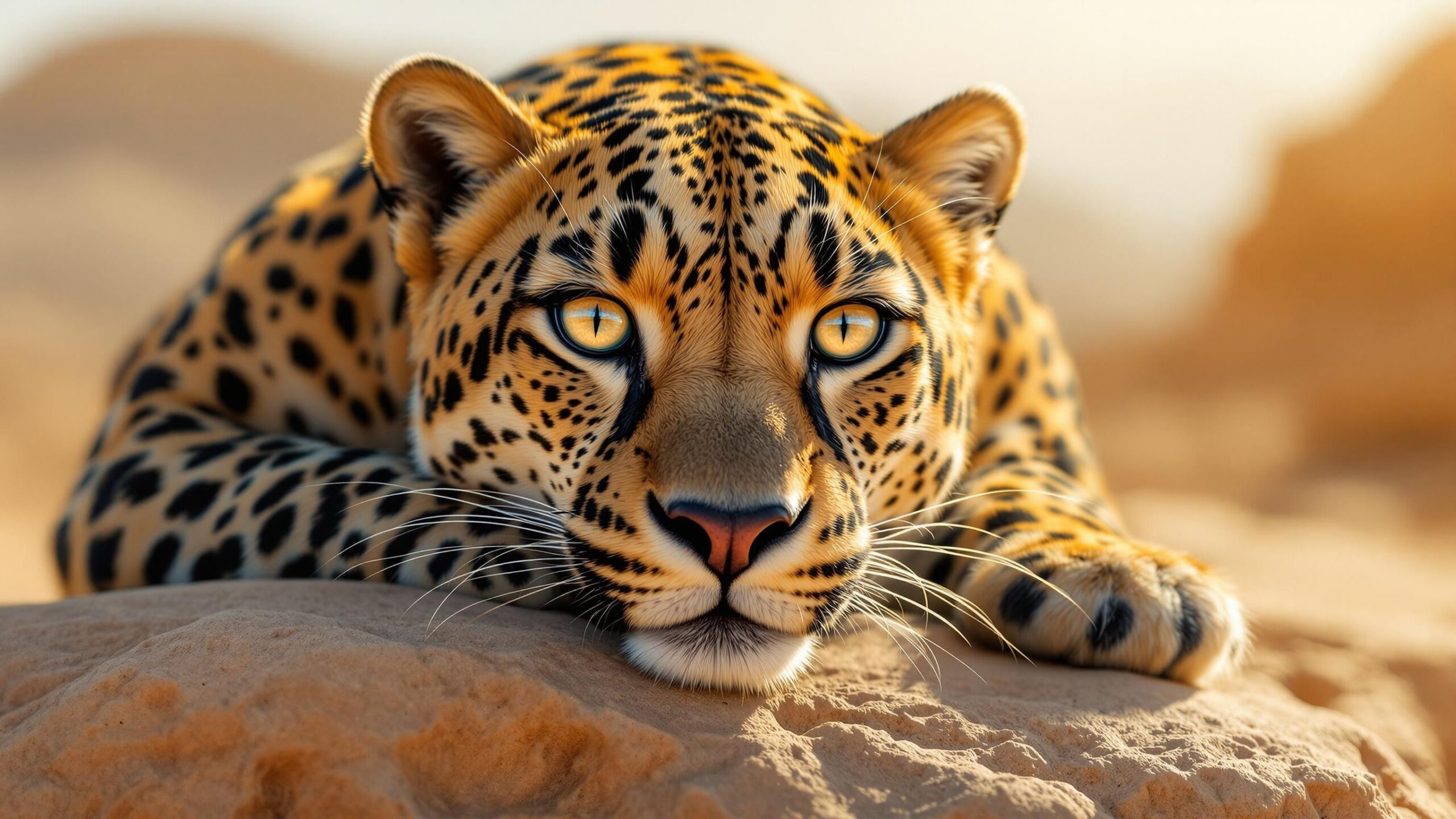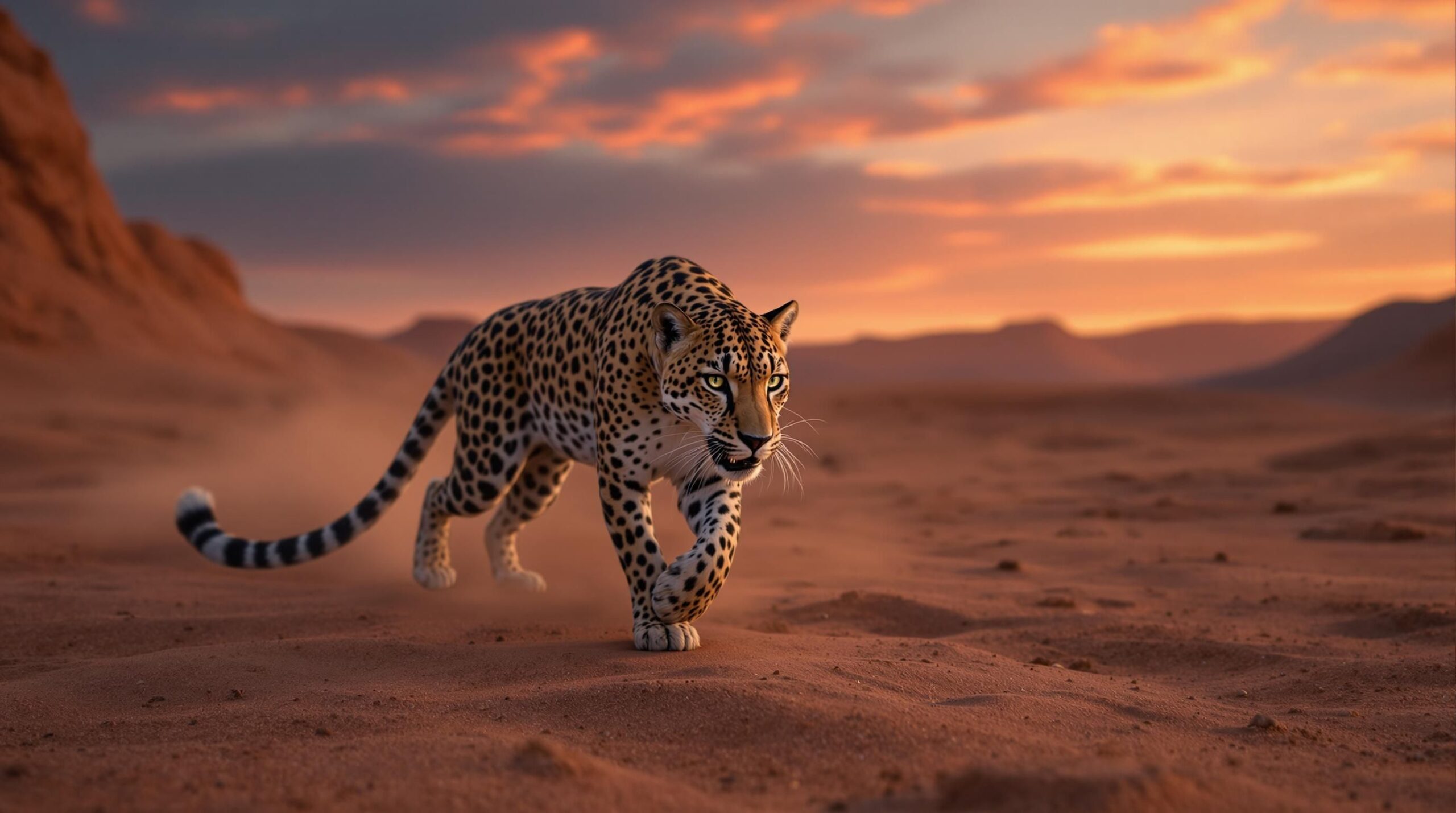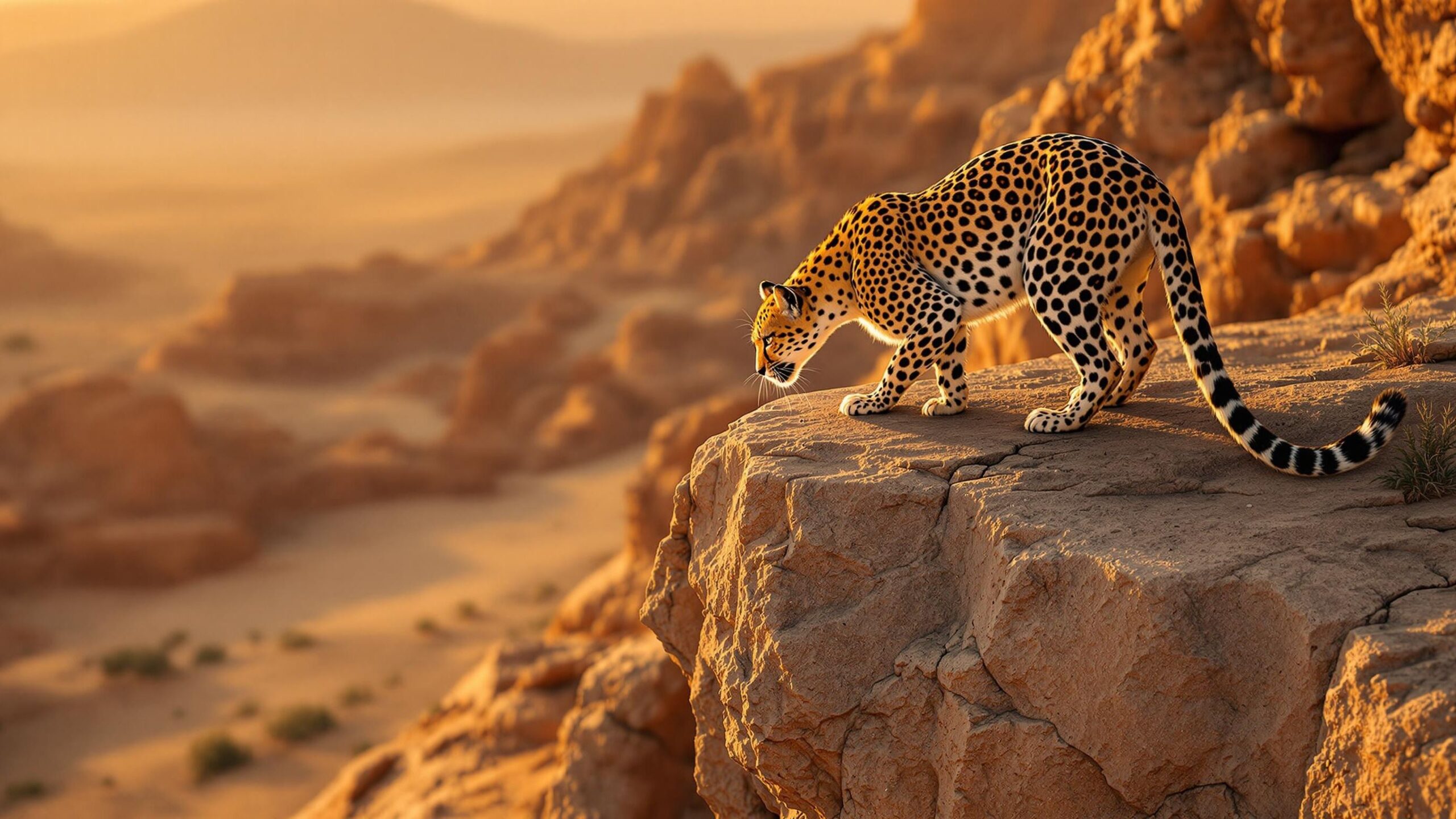Arabian Leopard: The Elusive Jewel of Arabia
Deep within the craggy mountain ranges and arid wilderness of the Arabian Peninsula prowls a predator so elusive that it has become the stuff of legend. The Arabian leopard (Panthera pardus nimr) is not only the smallest and rarest of all leopard subspecies, but also one of the most critically endangered big cats on Earth.
With fewer than 200 individuals estimated to remain in the wild, the Arabian leopard is as mysterious as it is majestic. Yet, it remains a symbol of resilience, stealth, and natural beauty across the landscapes of Oman, Saudi Arabia, and Yemen. This article dives into the world of the Arabian leopard—from its biology and behavior to its habitat and conservation challenges—while remaining accessible to anyone captivated by wildlife and the wonders of the natural world.
The Arabian Leopard at a Glance
The Arabian leopard is a distinct subspecies of leopard uniquely adapted to survive in one of the harshest environments on Earth. Compared to its African and Asian relatives, it is noticeably smaller and lighter, a vital evolutionary response to the extreme heat and sparse prey of the Arabian desert and mountains. Adult males typically weigh around 30 kilograms (66 pounds), while females are even lighter, averaging about 20 kilograms (44 pounds). This lean build enables them to traverse steep, rocky terrain with agility and stealth.
Their coats are a soft sandy or pale yellow, marked with the iconic rosette patterns typical of leopards but often lighter and less dense. This coloring provides perfect camouflage against the arid rocky landscapes, allowing them to remain hidden from both prey and human eyes.
Where Do Arabian Leopards Live?
The natural habitat of the Arabian leopard is as dramatic as it is unforgiving. These solitary big cats inhabit the rugged mountain ranges and remote highlands of the Arabian Peninsula, most notably the Dhofar Mountains of southern Oman, the Sarawat range in western Saudi Arabia, and isolated pockets in Yemen.
The Arabian leopard favors rocky escarpments, deep wadis (valleys), and arid plateaus—terrain that offers shelter, elevated vantage points, and opportunities to stalk prey. Water is scarce, vegetation sparse, and prey animals often widely dispersed, so leopards must command vast territories to find food and survive. Males may roam across 250 square kilometers or more, while females tend to occupy smaller but still expansive ranges.
A Predator in a Harsh Land
Despite its elegant appearance, the Arabian leopard is a powerful predator. Its diet is opportunistic and diverse, shaped by the availability of food in its sparse environment. Typical prey includes the Arabian tahr (a type of mountain goat), Nubian ibex, hares, hyraxes, and various bird species. When natural prey is scarce, leopards may hunt livestock, such as goats and sheep, which unfortunately increases conflict with humans.
Like all leopards, the Arabian leopard is a master of stealth. It hunts primarily at night or in the twilight hours of dawn and dusk, using its keen eyesight, acute hearing, and silent footfalls to approach unsuspecting prey. A burst of speed, a sudden pounce, and a powerful bite to the throat or neck usually finishes the job.
Solitary and Mysterious: Behavior and Social Life
Arabian leopards are quintessentially solitary animals, meeting only to mate. Each individual maintains a large territory and communicates with neighbors through scent marking, scratch marks on rocks and trees, and vocalizations such as growls and rasping calls.
Little is known about the mating rituals of Arabian leopards, but like other subspecies, females appear to come into estrus every few weeks. After a gestation of roughly three months, the female gives birth to one to three cubs in a secluded den—often a cave or rocky crevice. The cubs are born blind and helpless, relying entirely on their mother for warmth and protection. As the cubs grow, the mother teaches them essential hunting skills before they strike out on their own, usually by the time they are 18 to 24 months old. Sadly, in the wild, cub mortality is high due to environmental pressures and predation.

Evolutionary Marvel: Adaptation to Arid Climates
What makes the Arabian leopard truly remarkable is how it has adapted to its stark and unforgiving environment. Its smaller size reduces the need for food and water, crucial in a region where both are often in short supply. Its sandy coat allows it to blend seamlessly into the desert and mountainous backdrop. Even its hunting techniques have evolved to maximize energy efficiency—targeting prey that is often more elusive than in the richer African savannas.
Unlike leopards in rainforests or grasslands, the Arabian leopard must also cope with intense heat and long dry spells. They are rarely seen drinking from open water, leading researchers to believe that they obtain most of their moisture from the bodies of their prey. Their ability to survive and thrive in near-desert conditions places them among the most specialized and adaptable big cats in the world.
Threats in the Wild: On the Edge of Extinction
Once widespread across the Arabian Peninsula, the Arabian leopard now teeters on the brink of extinction. Its drastic decline has been driven by a deadly combination of factors—habitat destruction, poaching, prey depletion, and human-wildlife conflict. Urban expansion, road building, and livestock grazing have fragmented the leopard’s already limited habitat, isolating populations and making genetic exchange between them virtually impossible. Poaching remains a serious issue, despite legal protections. Some leopards are killed for their skins, while others fall victim to retaliatory killings after preying on livestock.
Another significant threat is the depletion of natural prey species. As overgrazing and hunting reduce populations of ibex and other wild animals, leopards are pushed toward livestock, igniting cycles of conflict with herders. Climate change adds a further layer of uncertainty. As rainfall patterns shift and droughts become more frequent, the fragile ecosystems on which the leopard depends may be altered permanently.
A Symbol of Heritage and Conservation Hope
Despite its perilous status, the Arabian leopard has become a powerful symbol of natural heritage and resilience. In recent years, conservation efforts have intensified, led by a growing recognition of the leopard’s ecological and cultural importance.
In Oman, the Arabian leopard has been under official protection since the 1970s. The Jabal Samhan Nature Reserve, established in 1997 in the Dhofar Mountains, remains the only confirmed area with a breeding population in the wild. Conservationists there use camera traps, genetic analysis, and GPS collars to study the leopards and monitor their numbers. Saudi Arabia has also launched bold initiatives in recent years. The Royal Commission for AlUla, for example, is leading efforts to breed and reintroduce Arabian leopards as part of a broader environmental restoration strategy. In 2022, the birth of a healthy leopard cub in captivity at the Arabian Leopard Breeding Center marked a hopeful milestone.
Captive Breeding and the Path to Recovery
Captive breeding programs are a vital lifeline for the Arabian leopard. With so few individuals left in the wild, zoos and breeding centers play a critical role in preserving the gene pool and maintaining population numbers.
The Arabian Leopard Breeding Center in Taif, Saudi Arabia, and the Breeding and Rehabilitation Center in Oman are two key institutions dedicated to the survival of this rare predator. These centers not only focus on reproduction but also aim to raise awareness and support reintroduction efforts. Breeding Arabian leopards in captivity is no simple task. Maintaining genetic diversity, replicating natural conditions, and preparing cubs for eventual rewilding all require meticulous care and planning. But with international collaboration and sustained funding, experts believe it is possible to restore leopard populations to carefully protected wild areas in the future.
Cultural Legacy: Revered and Remembered
For centuries, the Arabian leopard has held a place in the folklore, poetry, and cultural identity of the region. In Oman, it is known as “Nimr al-Arabi,” and stories of its cunning and strength are passed from generation to generation. In parts of Saudi Arabia and Yemen, leopards have appeared in tribal emblems, ancient rock art, and even traditional clothing motifs.
This cultural reverence is now being harnessed to fuel conservation awareness. Campaigns that connect people with their natural heritage—emphasizing the leopard not just as a wild animal but as a national treasure—are reshaping public attitudes and encouraging stewardship.

Why the Arabian Leopard Matters
Beyond its striking beauty and elusive allure, the Arabian leopard plays a critical role in the ecosystem. As an apex predator, it helps maintain the balance of prey populations and contributes to the health of the environment. Its presence is an indicator of biodiversity and ecological integrity.
Saving the Arabian leopard is not just about protecting a single species. It is about preserving a fragile web of life in one of the world’s most iconic and culturally rich landscapes. It is about ensuring that future generations inherit not only the stories of this magnificent cat but the chance to see it roam freely through the mountains and valleys of Arabia once more.
Looking Forward: A Fragile Hope
The road ahead for the Arabian leopard is steep and uncertain, but not without promise. Conservation science, regional cooperation, and public support are aligning in unprecedented ways. Each new cub born in captivity, each confirmed sighting in the wild, and each hectare of habitat restored brings us closer to a future where the Arabian leopard survives not just in memory, but in the wild.
Ultimately, the story of the Arabian leopard is one of resilience—of a creature perfectly adapted to endure the extremes of nature and, with our help, perhaps even the damage wrought by human hands. Its future now depends not just on researchers and rangers, but on a collective regional and global will to see this ghost of the mountains walk freely once again.

